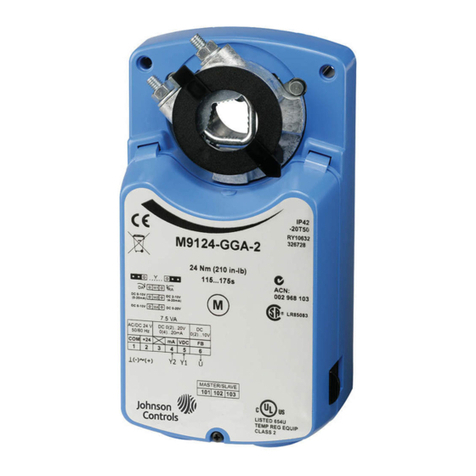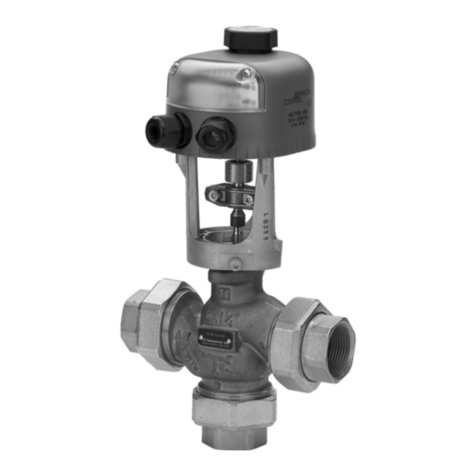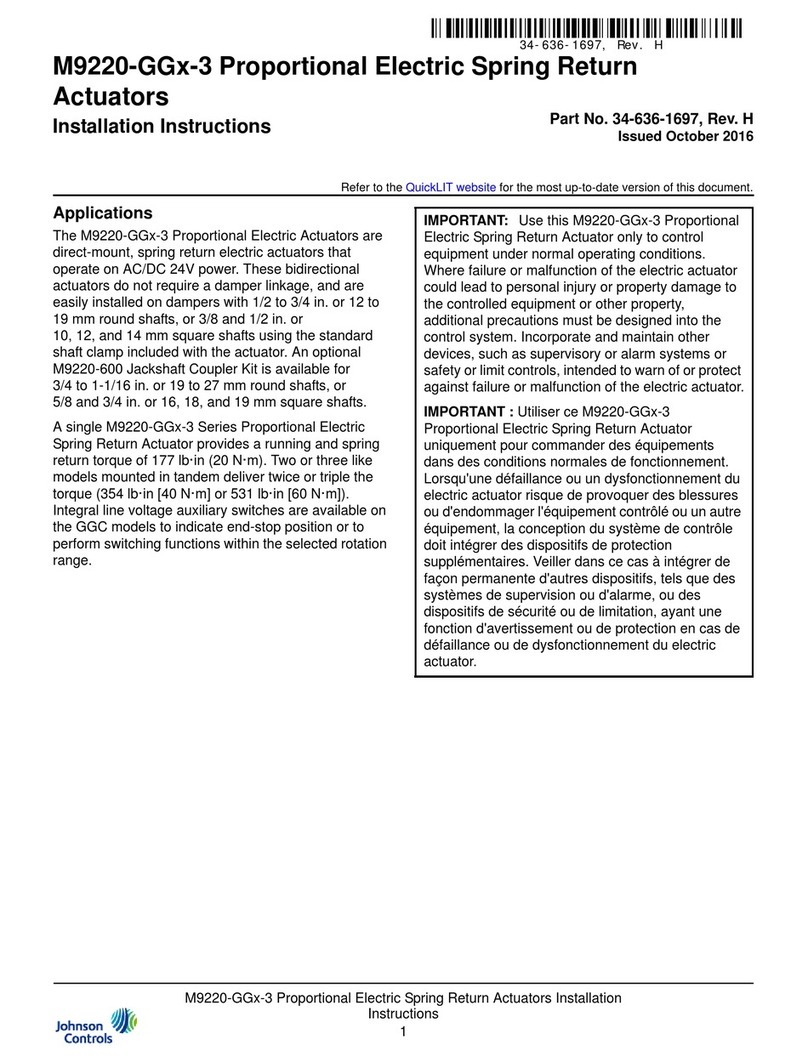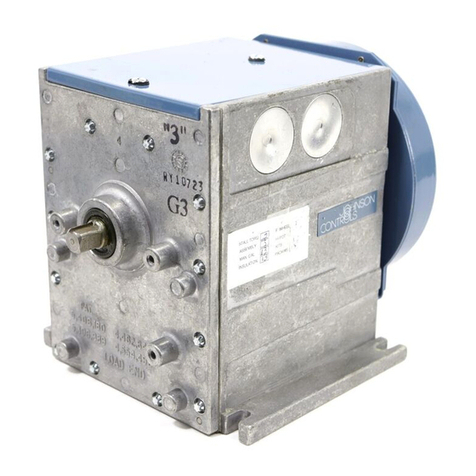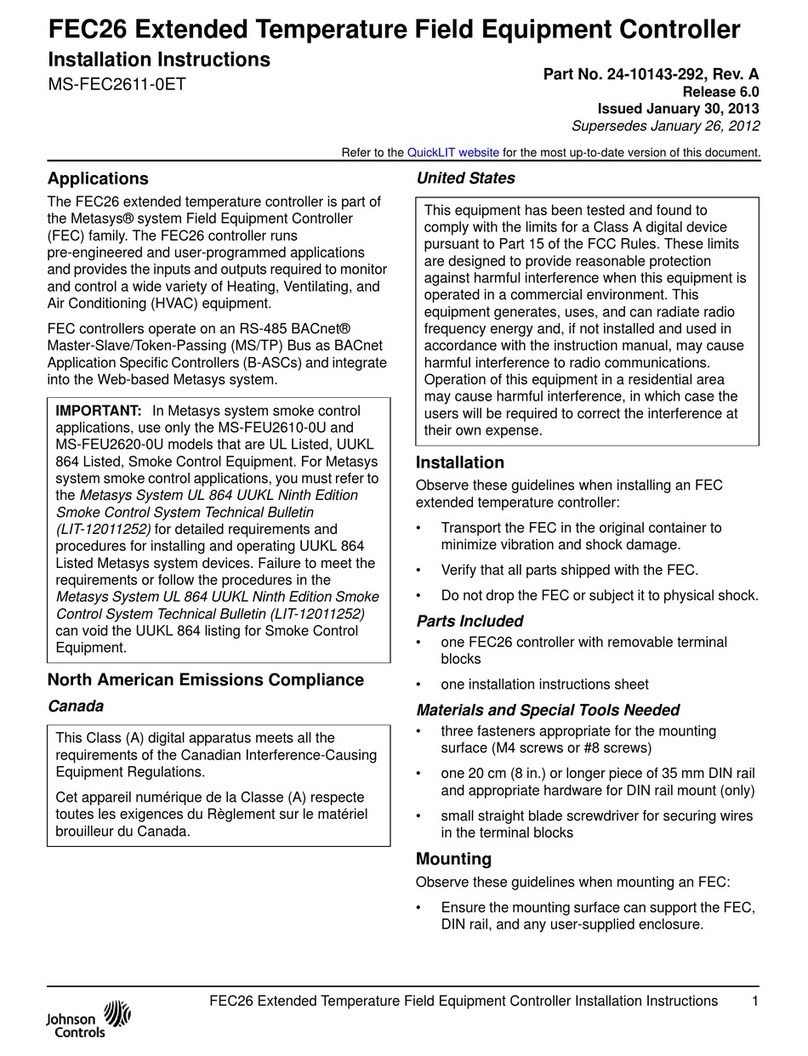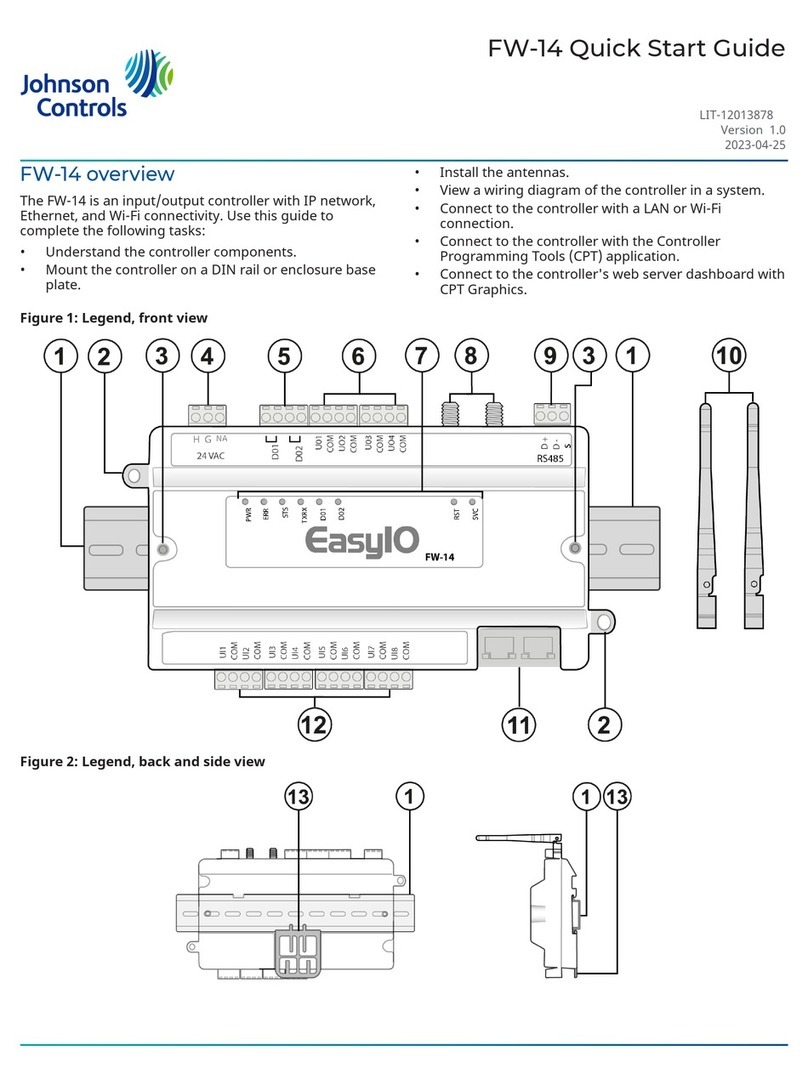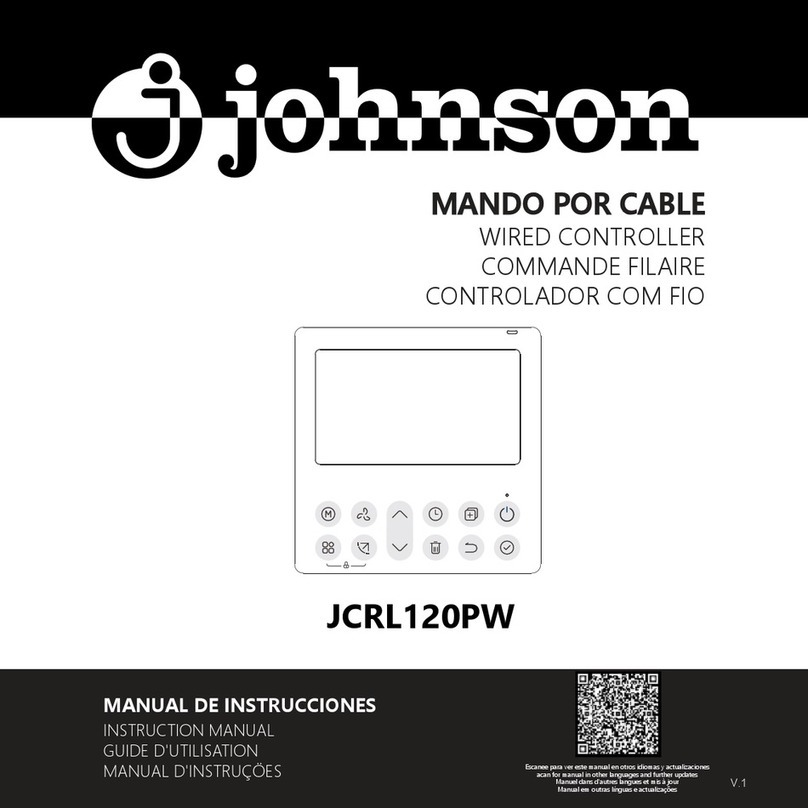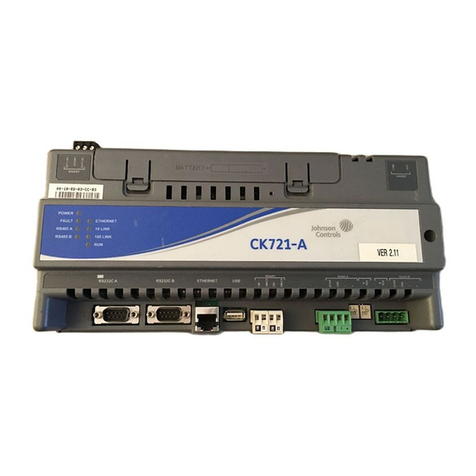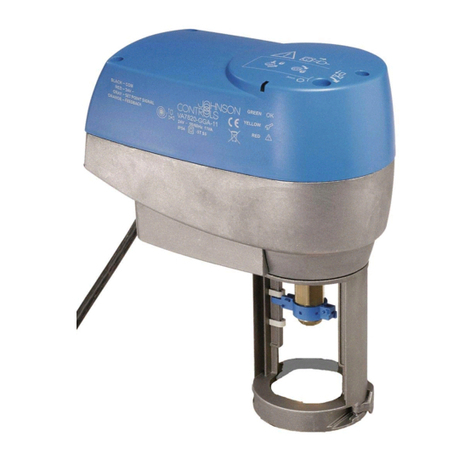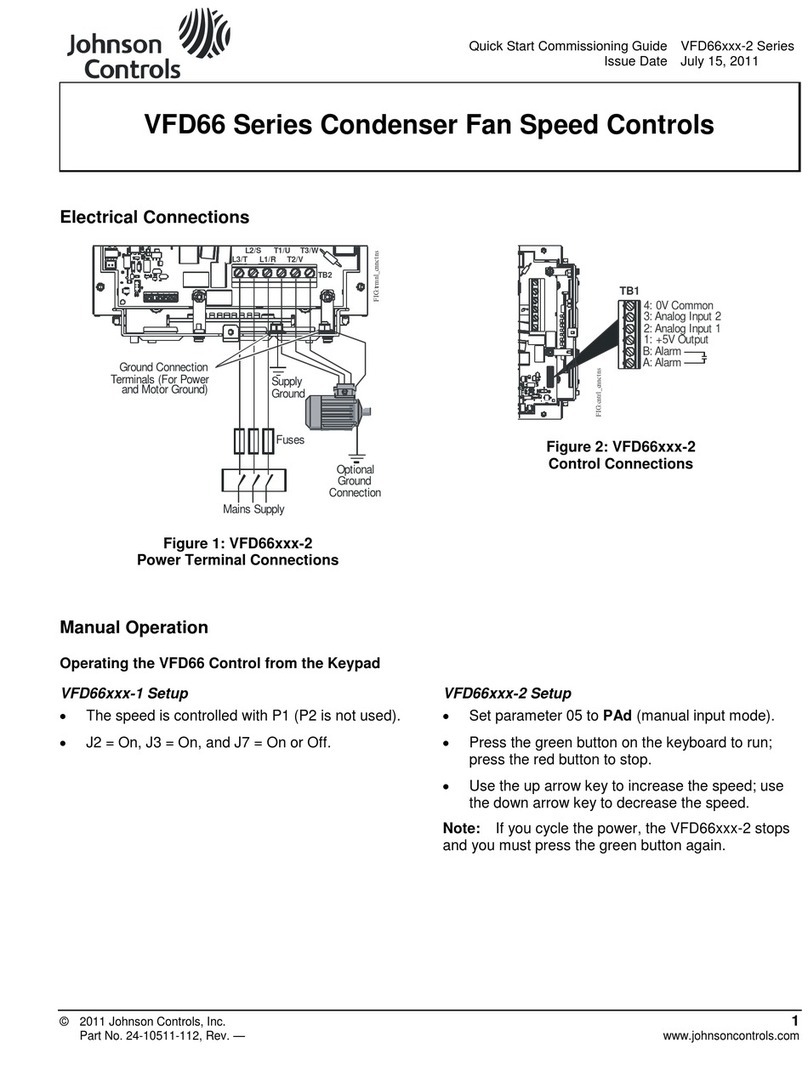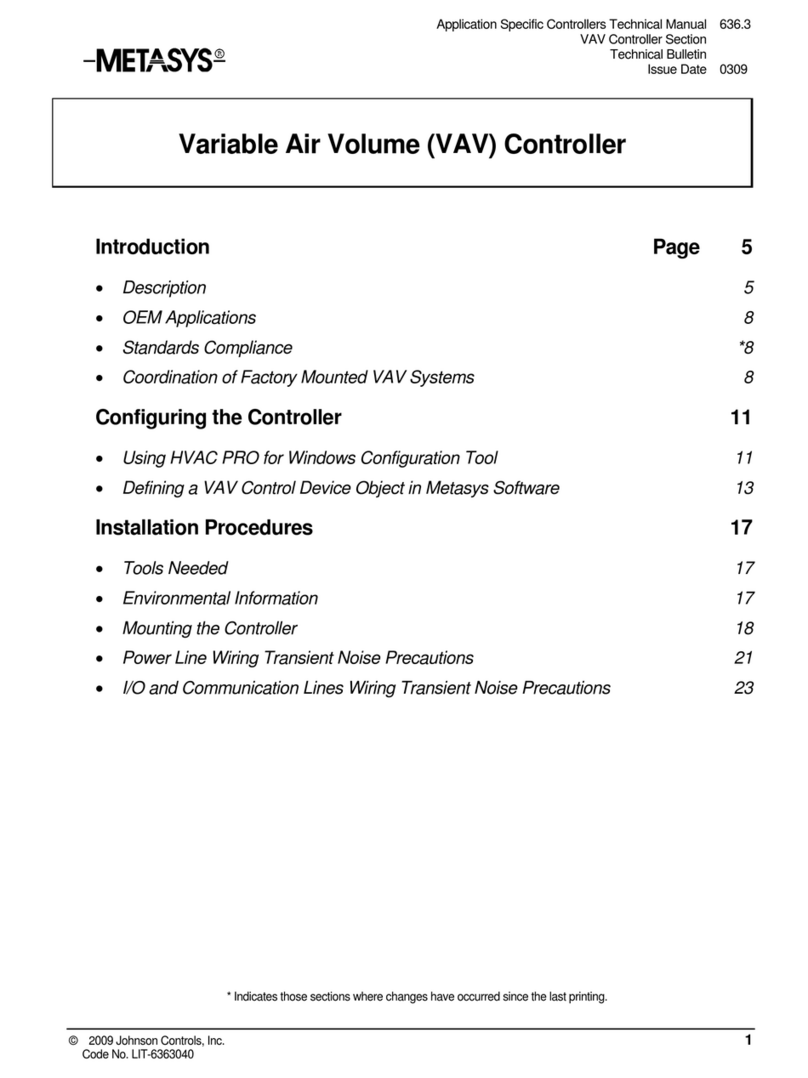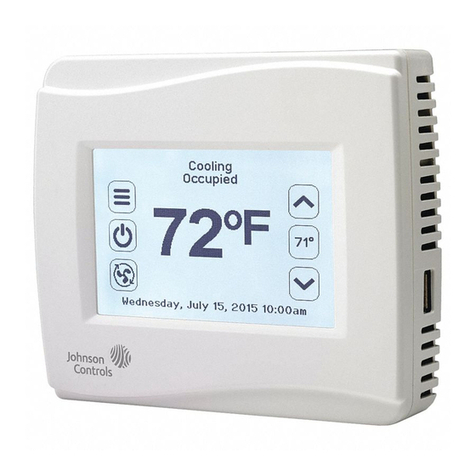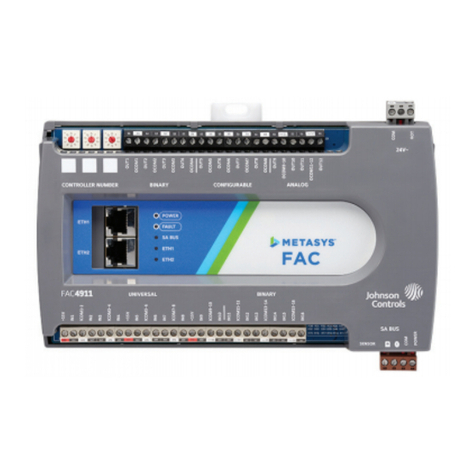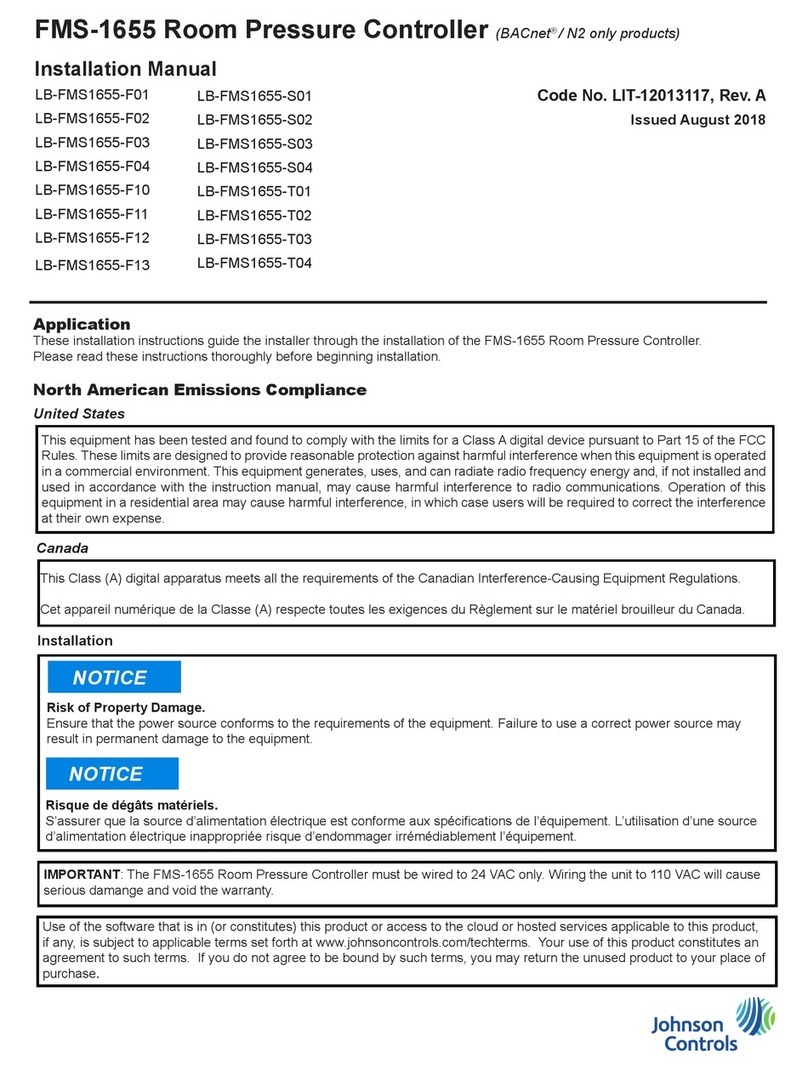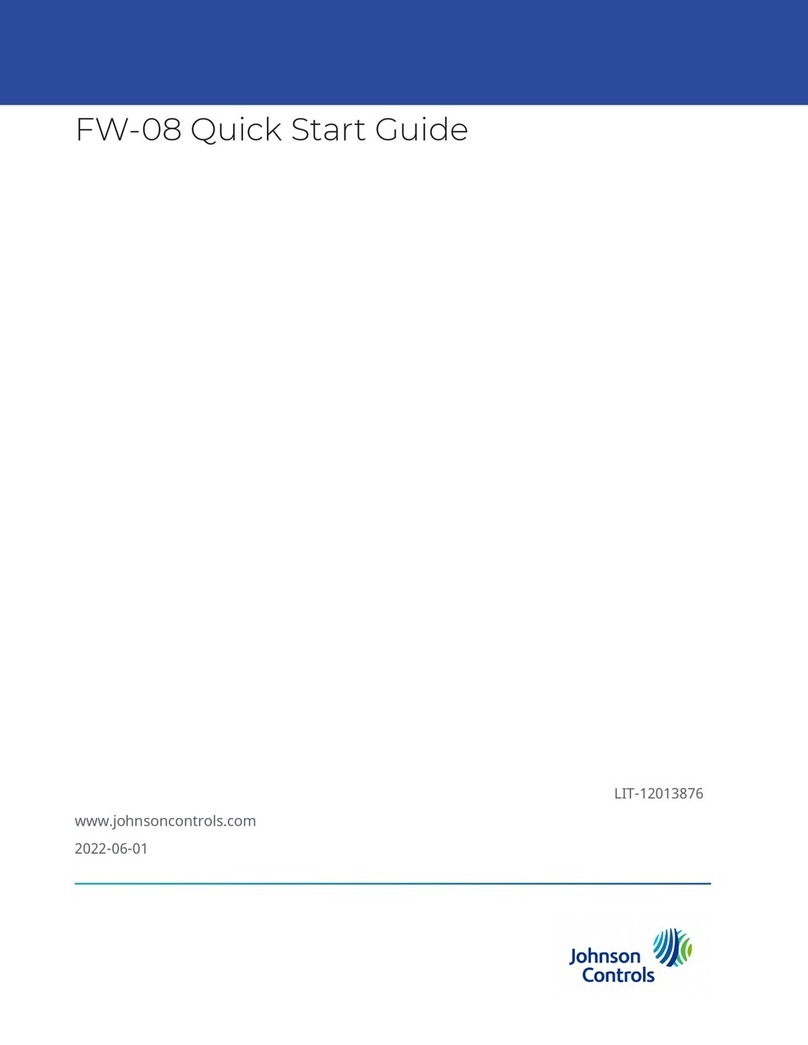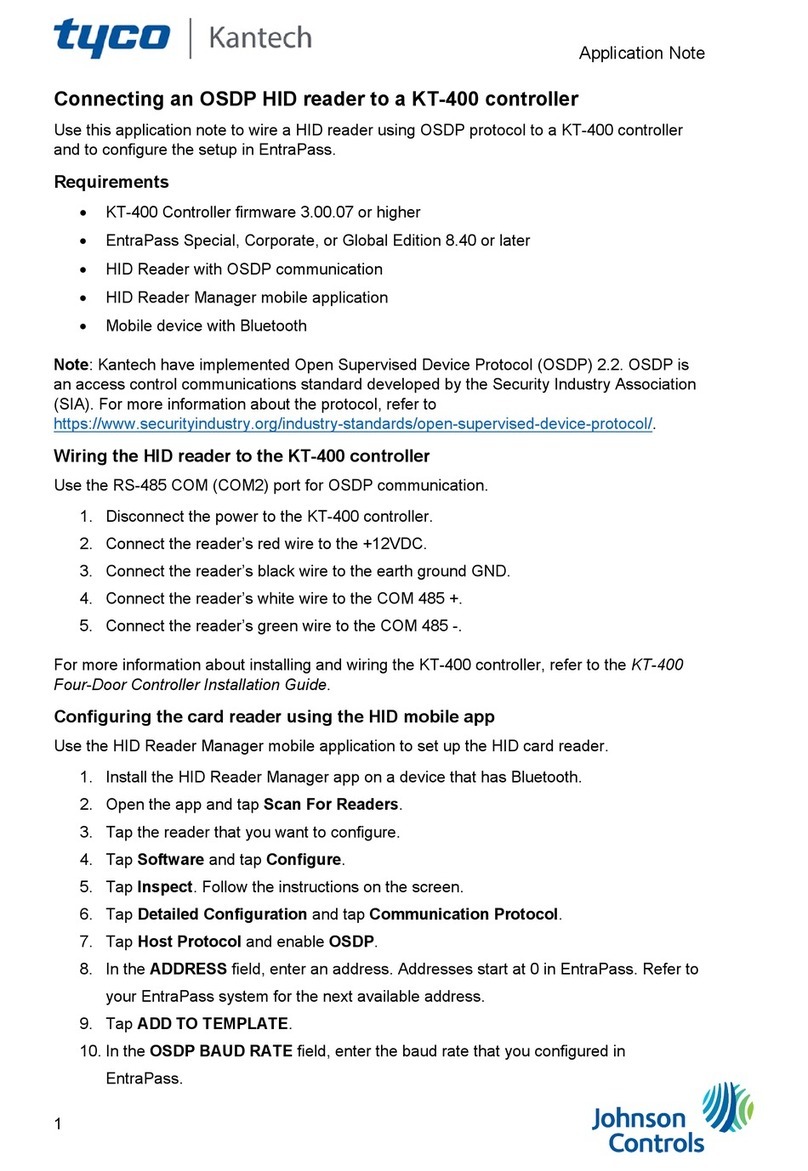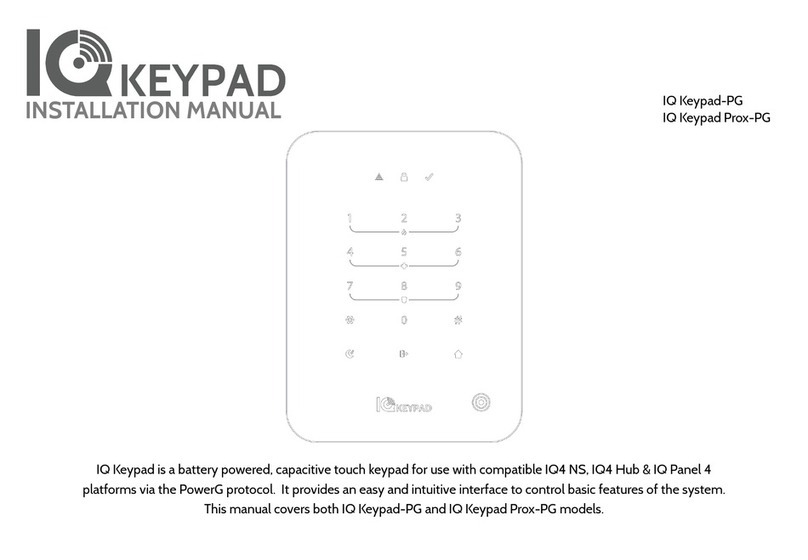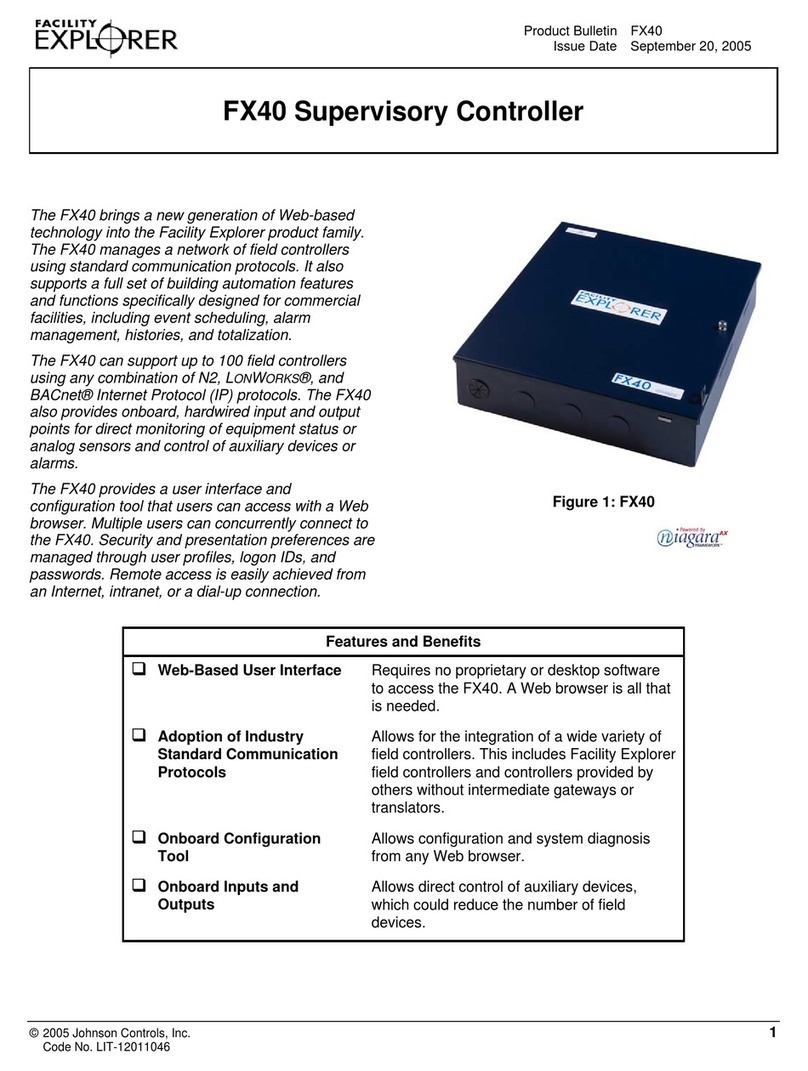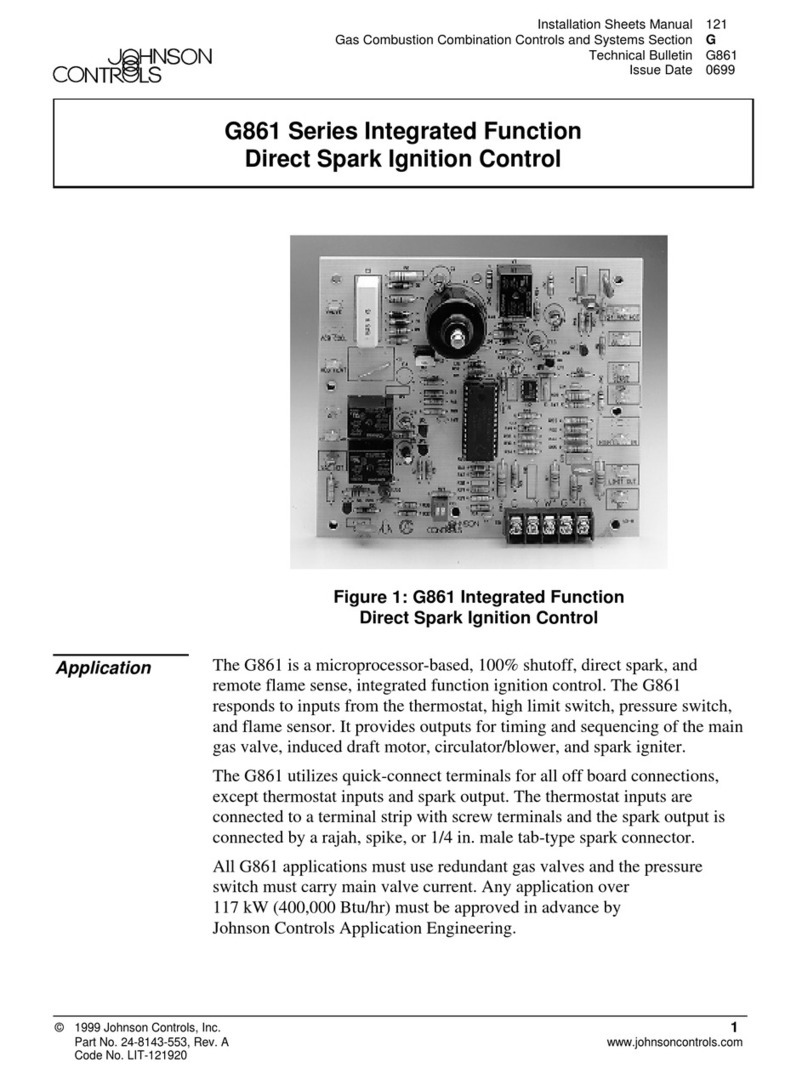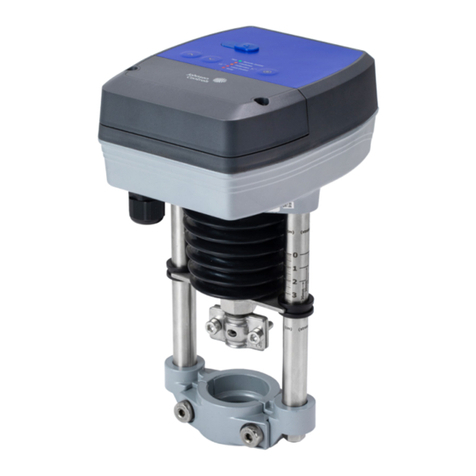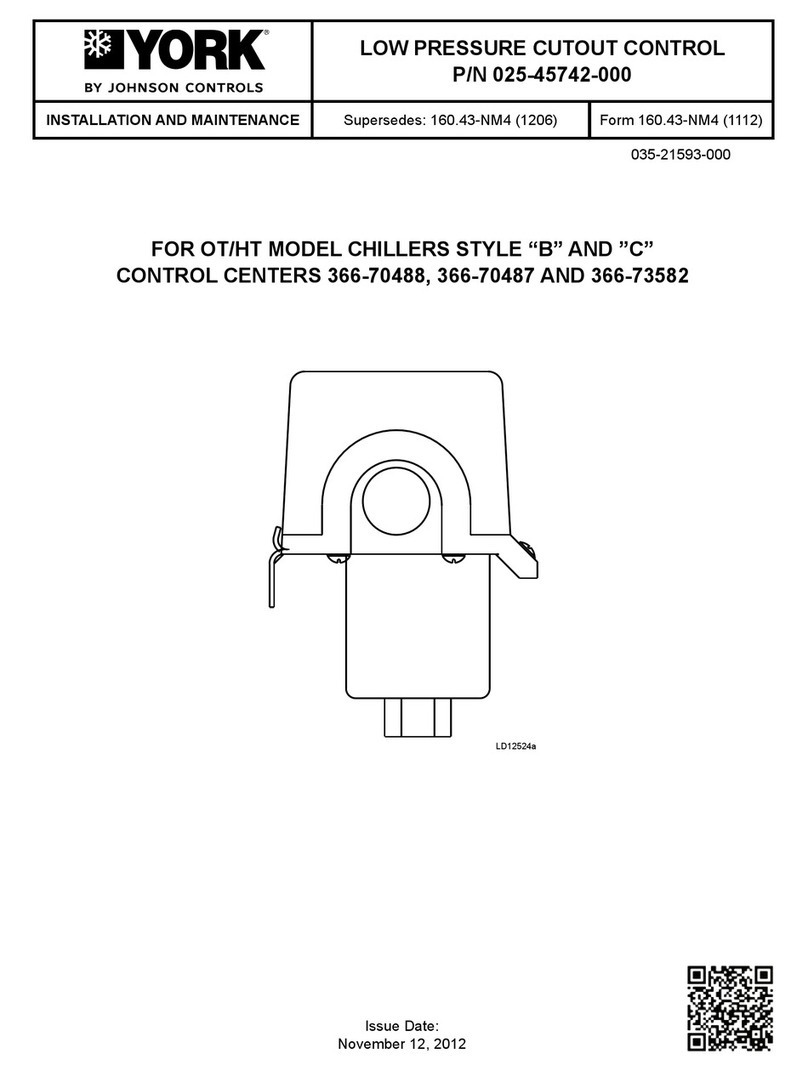
PENN | TC3B21 | Installation Guide Rev. C | Part No. 24-7664-03558 | Page 1 of 2 | 19 January 2021
TC3B21 Basic Defrost Controller Installation Guide
Basic controller for refrigerated cabinets with energy-saving strategies
- Controller for normal temperature units
- Power supply for TC3B21N5x: 115 VAC
- Power supply for TC3B21N7x: 230 VAC
- Cabinet probe with a negative temperature coefficient (NTC)
- Door switch or multi-purpose input
- Cooling or heating operation
MEASUREMENTS AND INSTALLATION
Measurements in mm (inches). Fit the controller to a panel with the snap-in brackets supplied.
INSTALLATION PRECAUTIONS
- Ensure that the thickness of the panel is between 0.8 mm and 2.0 mm (1/32 in. and
1/16 in.)
- Ensure that the working conditions are within the limits stated in the TECHNICAL
SPECIFICATIONS section.
- Do not install the device close to heat sources, equipment with a strong magnetic field,
in places subject to direct sunlight, rain, damp, excessive dust, mechanical vibrations
or shocks.
- In compliance with safety regulations, install the device correctly to ensure adequate
protection from contact with electrical parts. Fix all protective parts in such a way so
as to need the aid of a tool to remove them.
Important
- Use cables of an adequate wire gauge for the current running through them.
- To reduce any electromagnetic interference, connect the power cables as far away
as possible from the signal cables.
- Power supply for TC3B21N5x: 115 VAC.
- Power supply for TC3B21N7x: 230 VAC.
PRECAUTIONS FOR ELECTRICAL CONNECTION
- If you use an electrical or pneumatic screwdriver, adjust the torque to a maximum of
0.5 N•m (4 in. lb).
- If you move the device from a cold to a warm place, the humidity may cause
condensation to form inside. Wait an hour before you switch on the power.
- Make sure that the supply voltage, electrical frequency, and power are within the set
limits. See TECHNICAL SPECIFICATIONS.
- Disconnect the power supply before you do any type of maintenance.
- Do not use the device as safety device.
- For repairs and further information, contact the Penn sales network.
1. Follow the instructions in MEASUREMENTS AND INSTALLATION to install the controller.
2. Power up the device as shown in ELECTRICAL CONNECTION and an internal test runs.
The test normally takes a few seconds. When it finishes the display switches off.
3. Configure the device as shown in Table 6.1 in SETTINGS.
For recommended configuration parameters for first-time use, see the following table.
Temperature unit of measurement
Check that the remaining settings are appropriate; see CONFIGURATION PARAMETERS.
4. Disconnect the device from the mains.
5. Make the electrical connection as shown in ELECTRICAL CONNECTION without powering
up the device.
6. Power up the device.
USER INTERFACE AND MAIN FUNCTIONS
4.1 Switching the device on or off
1. If POF = 1, tap the ON/STAND-BY key for 4 s.
If the device is switched on, the display shows the P5 value, cabinet temperature by default. If
the display shows an alarm code, see ALARMS.
Compressor on
Compressor off
- Compressor protection active
- Setpoint setting active
Defrost active
-
Dripping active
- If device on, energy
saving active
- If device off, low
-
-
°C/°F View temperature
-
-
Device off
Device on
Device on or off active
If 30 s elapse and you do not press the keys, the display shows the “Loc” label and the keypad
locks automatically.
4.2 Unlocking the keypad
Tap any key for 1 s: the display shows the label “UnL”.
4.3 Setting the setpoint
Check that the keypad is not locked.
1. Tap the SET key.
2.
Tap the UP or DOWN key within 15 s to set the value within the
3. Tap the SET key or do not operate for 15 s.
4.4 Activating manual defrost (if r5 = 0, default)
Check that the keypad is not locked.
1. Tap the UP key for 2 s.
If P4 = 1, the defrost activates if the evaporator temperature is lower than the d2 threshold.
5.1 Navigating the additional functions menu
Before you begin, check that the keypad is not locked.
1.
To access the additional functions menu, tap the DOWN key for
4 s.
2.
To navigate to a label, tap the UP or DOWN key within 15 s.
3.
To select a label, tap the SET key.
4.
If you cannot edit the parameter, the value displays.
If you can edit the parameter, tap the UP or DOWN key to
navigate to the value that you want.
5.
To set the parameter value, tap the SET key.
6.
To exit the procedure, tap the ON/STAND-BY key, or do not
operate the controller for 60 s.
5.2 Additional functions menu
Use the additional functions menu to cycle through the labels in the following table.
LABEL DESCRIPTION
Pb1 Cabinet temperature
Pb2 Auxiliary temperature if P4 = 1 or 2
6.1 Setting configuration parameters
1. Tap the SET key for 4 s. The display shows the label “PA”.
2. Tap the SET key.
3.
Tap the UP or DOWN key within 15 s to set the password.
4. Tap the SET key or do not operate for 15 s. The display shows
5.
Tap the UP or DOWN key to select a parameter.
6. Tap the SET key.
7.
Tap the UP or DOWN key within 15 s to set the value.
8. Tap the SET key or do not operate for 15 s.
9. Tap the SET key for 4 s, or do not operate for 60 s, to exit the
6.2 Restoring the default factory settings and storing customized settings as
default
Important
- Check that the factory settings are appropriate; see CONFIGURATION
PARAMETERS.
- When you store customized settings, you overwrite the default.
1. Tap the SET key for 4 s. The display shows the label “PA”.
2. Tap the SET key.
3.
Tap the UP or DOWN key within 15 s to set the value.
Restores the default factory settings
Stores customized settings as default
4.
Tap the SET key or do not operate for 15 s. The display shows
the label “dEF” when you set the value “149” or the label “MAP”
when you set the value “161”.
5. Tap the SET key.
6.
Tap the UP or DOWN key within 15 s to set “4”.
7. Tap the SET key or do not operate for 15 s. The display shows
"- - -" flashing for 4 s, then the device exits the procedure.
Interrupt the power supply to the device.
9. Tap the SET key 2 s before step 6. to exit the procedure
Temperature unit of measurement
P4
0
Configurable input function
0 = Door switch/multi-pur-
pose input
1 = Evaporator probe
P5
0
Value displayed
0 = Cabinet temperature
1 = Setpoint
2 = Auxiliary temperature
Setpoint offset in energy saving
r5
0
Cooling or heating operation
0 = Cooling
r12
1
Position of the r0 differential
0 = Asymmetric
C0
0
Compressor on delay after power-on 0 min to 240 min
Compressor off minimum time
Compressor on minimum time
C4
0
Compressor off time during cabinet
0 min to 240 min
C5
10
Compressor on time during cabinet
0 min to 240 min
C6
176
Threshold for high condenser
0°F/°C to 199°F/°C
C7
194
Threshold for high condenser
0°F/°C to 199°F/°C
C8 1 High condenser temperature alarm
0 min to 15 min
d0
8
Automatic defrost interval
0 h to 99 h
0 = Only manual
If d8 = 3, maximum interval
Threshold for defrost end
d3
30
Defrost duration
0 min to 99 min
If P4 = 1, maximum duration
Enable defrost at power-on
Defrost delay after power-on
d6
1
Value displayed during defrost
0 = Cabinet temperature
1 = Display locked
d8
0
Defrost interval counting mode
0 = Device on hours
1 = Compressor on hours
2 = Hours evaporator
temperature < d9
d9
32
Evaporation threshold for automatic
defrost interval counting
-99°F/°C to 99°F/°C
Enable defrost timeout alarm
d18
40
Adaptive defrost interval
0 min to 999 min
If compressor on and
evaporator temperature <
d22
d19
6
Threshold for adaptive defrost,
relative to optimal evaporation
0°F/°C to 40°F/°C
Optimal evaporation
d20
180
Compressor on consecutive time for
0 min to 999 min
Evaporation threshold for adaptive
defrost interval counting, relative to
optimal evaporation temperature
Optimal evaporation
A1
-20
Threshold for low temperature alarm
(relative to setpoint)
0°F/°C to 99°F/°C
SP - A1
A4
20
Threshold for high temperature alarm
(relative to setpoint)
0°F/°C to 99°F/°C
SP + A4
High temperature alarm delay after
power-on
A7
15
High and low temperature alarms
0 min to 240 min
A11
4
High and low temperature alarms
1°F/°C to 15°F/°C
i0
1
Door switch or multi-purpose input
function
0 = None
1 = Compressor off
2 = Energy saving
3 = iA alarm
4 = iA alarm + compressor
Door switch or multi-purpose input
activation
0 = With contact closed
1 = With contact open
i2
30
Open door alarm delay
-1 min to 120 min
If i0 = 3, multi-purpose input
alarm delay
If i0 = 4, compressor on
delay after alarm reset
Regulation inhibition maximum time
with door open
-1= Until the closing
i10
0
Door closed consecutive time for
energy saving
0 min to 999 min
After regulation temperature
< SP
i13
Number of door openings for defrost 0 to 240
0 = Disabled
i14
32
Door open consecutive time for
0 min to 240 min
ENERGY SAVING (if r5 = 0)
Energy saving maximum duration
0 = Until the door opening
HE3
2
No operation on the keyboard
consecutive time for low consumption 0 min to 240 min
0 = Disabled
PAR. DEF. SAFETIES MIN. - MAX.
POF 1 Enable ON/STAND-BY key 0 = No 1 = Yes
PAS 0 Password -99 to 999
- Check electrical connection
AL Low temperature alarm Automatic Check A1
AH High temperature alarm Automatic Check A4
id Open door alarm Automatic Check i0 and i1
COH High condenser temperature
Automatic Check C6
CSd
High condenser temperature
alarm
Manual
- Switch the device off and on
- Check C7
Multi-purpose input alarm
- Check d2, d3, and d11

